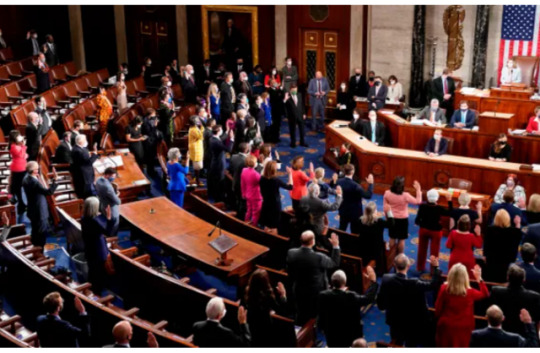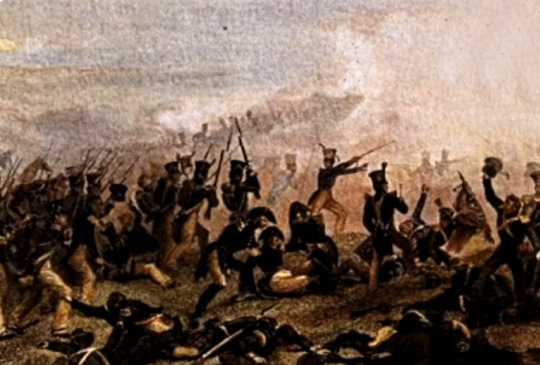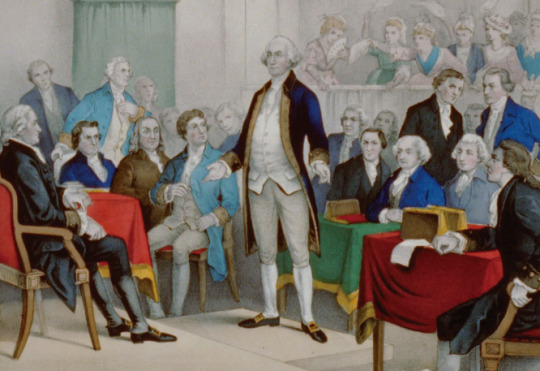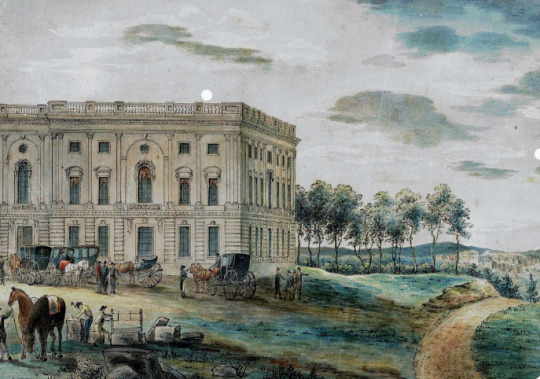Text
Now and Then
It's absolutely astonishing to see the complete transformation of the Democrat party over the last 30 yrs. Let's look at an historic piece of legislation from that era and compare it with the reality we now live in. The Violent Crime Control and Law Enforcement Act of 1994 was a comprehensive crime control legislation signed into law by Democrat President Bill Clinton on September 13, 1994. It was one of the most significant pieces of crime legislation in U.S. history and aimed to address the rising crime rates and public concerns about crime during that time. Keep in mind that at this point in our history, fighting crime and punishing criminals was a bipartisan effort. One of the most notable provisions of the act was the federal ban on the manufacture, possession, and sale of certain semi-automatic firearms, referred to as "assault weapons." The ban prohibited the manufacture and importation of specific firearms with military-style features. In itself, the ban sounds very much like Democrat ideology except, unlike other parts in the bill, this piece had an expiration date. The ban lasted for ten years until it expired in 2004.

The act also greatly expanded the list of federal crimes that were eligible for the death penalty. It also introduced provisions to expedite the appeals process for death row inmates.
The act included a "three strikes" provision that mandated life imprisonment without the possibility of parole for individuals convicted of a violent felony or serious drug offense after two or more prior convictions for similar offenses. Compare that to today, where convicted felons could feasibly commit multiple violent offenses without being charged with even a single felony!
The act allocated significant funding to support community-oriented policing programs, aiming to increase the number of police officers on the streets and promote collaboration between law enforcement agencies and local communities. Today, every effort to diminish the role of police, coupled with a cut in funding in many communities, makes this extremely difficult and demoralizes police.

The act implemented various reforms in the juvenile justice system, including stricter penalties for juvenile offenders who committed serious crimes, funding for prevention and intervention programs, and provisions to address gang-related activities. Today, juveniles are rarely held accountable for even the most violent offenses such as assault, carjacking, and armed robbery.
The act included a reauthorization of the Violence Against Women Act, which aimed to improve responses to domestic violence, sexual assault, and stalking, and provide support for victims. This sounds wonderful, except that it doesn't address the rights of the accused against bogus accusations and assumed guilt.
The Violent Crime Control and Law Enforcement Act received mixed reactions and generated debates. Supporters argued that it was necessary to address the high crime rates and enhance public safety. Why, then, isn't that still a priority today? Critics raised concerns about its impact on mass incarceration, racial disparities in the criminal justice system but yet these same critics have no real alternative.

It's worth noting that the act's impact and effectiveness have been subject to ongoing analysis and discussion, and subsequent criminal justice reforms have modified or repealed some of its provisions.
0 notes
Text
Tumbleweeds, often associated with the American West, have an interesting history and are not native to North America. The most common type of tumbleweed in the United States is known as the Russian thistle (Salsola tragus). Here's some information on the origins and introduction of tumbleweeds to the American West:
Tumbleweeds are originally from the region of what is now southern Russia. The Russian thistle is believed to have been introduced to North America in the mid 1880's.
Tumbleweeds were likely introduced to North America unintentionally. It is believed that the seeds of Russian thistle hitched a ride in shipments of flaxseed or other crops imported from Europe.
Once introduced, tumbleweeds quickly spread across the American West due to their adaptability and ability to disperse seeds over long distances. They were particularly successful in the arid and semi-arid regions where they found suitable conditions to thrive. Open space, wind, and even grain cars on trains were significant contributing factors to the spread.
Tumbleweeds have a unique growth habit. After the plant matures and dries out, it detaches from its roots and is blown by the wind, scattering seeds as it tumbles. This enables the plant to disperse widely and colonize new areas.
Tumbleweeds are considered invasive plants in many regions. They can compete with native vegetation for resources and space, often outcompeting other plants due to their robust growth and ability to spread rapidly. Their presence can also pose a fire hazard, as they can accumulate in large numbers and become highly flammable.
Tumbleweeds have become an iconic symbol of the American West, often depicted in movies and literature. They are frequently associated with the image of desolate landscapes and ghost towns.


While tumbleweeds are not native to the American West, they have become a familiar part of the region's ecology and cultural identity over time.
0 notes
Text
Founded on August 23, 1784 was the short-lived state known as Franklin. Nestled within the beautiful Appalachian Mountains, the state of Franklin found its roots in the rugged wilderness of what is now modern-day Tennessee.

It all began in the year 1784 when a group of brave pioneers and settlers sought independence from the state of North Carolina. Led by the charismatic and determined John Sevier, these men and women yearned for self-governance and dreamed of creating their own sovereign state.
Inspired by the ideals of liberty and freedom, the citizens of Franklin embarked on a remarkable journey. They crafted a constitution, elected their officials, and established their own system of justice. The state of Franklin was born, named in honor of Benjamin Franklin, a revered statesman of the time.
However, the road to independence was not without its challenges. The fledgling state faced numerous obstacles, both internal and external. Financial struggles burdened the young state, hindering its ability to thrive and develop. Additionally, disputes with Native American tribes over land rights threatened to destabilize the region.
Despite these difficulties, the spirit of the people of Franklin remained unyielding. They persevered, forging ahead with determination and resilience. Yet, their dream of statehood was not destined to last.
In 1788, the state of Franklin faced its greatest setback. The United States Congress rejected Franklin's petition for statehood, leaving the independent aspirations of its citizens shattered. With their dreams crushed, the state of Franklin dissolved, and its territory was eventually reincorporated into North Carolina.
Though Franklin may have been short-lived, its legacy lives on. It stands as a testament to the indomitable spirit of those early pioneers who dared to dream big and fought for their principles. Their unwavering belief in self-governance and the pursuit of liberty would serve as an inspiration for generations to come.
Today, the state of Franklin may only exist in the annals of history, but its story serves as a reminder that even the shortest-lived states can leave a mark on the tapestry of a nation. The dream of freedom and self-determination forever resides within the hearts of those who carry the spirit of Franklin onward, reminding us that the pursuit of liberty is timeless.
0 notes
Text
Henry M. Leland founded Cadillac Automobile Company on August 22, 1902. The company was initially named the Cadillac Automobile Company and established in Detroit, Michigan. Leland had previously been involved in the automotive industry and had reputation for precision engineering. He aimed to create luxury automobiles that were known for reliability and innovation. Leland named the company "Cadillac" after Antoine de la Mo Cadillac, the founder of the city of Detroit. The first model introduced in October 1902, and it featured a single-cylinder engine with several innovative design aspects. Cadillac quickly gained recognition for its advanced engineering and-quality craftsmanship. In 1909, General Motors acquired Cadillac, and it became one of the luxury brands under the GM Over years, Cadillac continued to introduce notable advancements in automotive technology, including introduction of V8 engines, electric starters and modern safety features. Today, Cadillac is known for luxurious and high-performance vehicles, ranging fromans to SUVs. It maintained a strong reputation for its commitment to quality, innovation, and elegant design throughout.

0 notes
Text
The United States of America is a melting pot of diverse cultures, languages, and traditions that contribute to its overall identity. Each state has its own unique history and cultural heritage. In this post, we will explore the origins of American nations, examining how different regions were shaped by their settlement patterns, economic development, and cultural practices. From the Puritan Northeast to the Latino Southwest, we will delve into the factors that have influenced the formation of these distinct American nations. By the end of this post, you will have a better understanding of the complex tapestry of American history and its contribution to the diverse society we live in today. The concept of the American Melting Pot has long been ingrained in American society. It represents the diverse cultural, ethnic, and religious backgrounds that have come together to shape the nation. The roots of the Melting Pot can be traced back to the early waves of immigration, beginning with the arrival of the Pilgrims in 1620. As more settlers arrived from Europe, each group brought their own customs, traditions, languages, and beliefs. Over time, the United States became a haven for people from around the world, creating a rich tapestry of diversity that defines the American experience. The Melting Pot suggests that these diverse cultures and identities would blend together to form a new American identity. However, there are also challenges and criticisms surrounding the concept, as some argue it promotes the erasure of individual cultural identities and forces conformity. In recent years, there has been a shift towards inclusivity, cultural exchange, and the preservation of individual heritage within a multicultural society. To understand the United States and its diverse cultures, it is important to explore the origins of its various nations. The United States is often referred to as a "melting pot," representing the blending of different ethnicities, languages, and traditions in its history. The origins of American nations can be traced back to the earliest settlers, including Native American nations with their distinct languages, customs, and spiritual beliefs. The arrival of European colonizers brought further diversity, as they established colonies with their own cultural markers. The forced migration of African peoples through the transatlantic slave trade also left a lasting impact. Waves of immigration from various parts of the world, including Irish, German, Italian, Chinese, Jewish, and others, further enriched American society. Understanding the diverse origins of American nations allows us to appreciate the complexities and nuances of American culture and identity, celebrating the contributions of different groups and fostering a sense of unity amid diversity. Before European settlers arrived, the land that is now the United States was already occupied by a rich tapestry of diverse Native American nations. These indigenous peoples had deep roots in the region, with vibrant cultures, unique languages, and complex societal structures. From the Plains tribes like the Sioux, Cheyenne, and Blackfoot, who relied on buffalo herds, to the Southwest civilizations of the Hopi, Navajo, and Pueblo, Native American nations played an integral role in shaping the continent. Understanding the original inhabitants is crucial for appreciating the complexities of American culture and fostering an inclusive and equitable society.




0 notes
Text
The United States of America is a melting pot of diverse cultures, languages, and traditions that contribute to its overall identity. Each state has its own unique history and cultural heritage. In this post, we will look at the origins of American nations, examining how different regions were shaped by their settlement patterns, economic development, and cultural practices. From the Puritan Northeast to the Latino Southwest, we'll delve into the factors that have influenced the formation of these distinct American cultures. By the end of this post, you will have a better understanding of the complex tapestry of American history and its contribution to the diverse society we live in today. The concept of the American Melting Pot has long been ingrained in American society. It represents the diverse cultural, ethnic, and religious backgrounds that have come together to shape the nation. The roots of the Melting Pot can be traced back to the early waves of immigration, beginning with the arrival of the Pilgrims in 1620. As more settlers arrived from Europe, each group brought their own customs, traditions, languages, and beliefs. Over time, the United States became a haven for people from around the world, creating a rich tapestry of diversity that defines the American experience. The Melting Pot suggests that these diverse cultures and identities would blend together to form a new American identity. However, there are also challenges and criticisms surrounding the concept, as some argue it promotes the erasure of individual cultural identities and forces conformity. In recent years, there has been a shift towards inclusivity, cultural exchange, and the preservation of individual heritage within a multicultural society. To understand the United States and its diverse cultures, it is important to explore the origins of its various nations. The United States is often referred to as a "melting pot," representing the blending of different ethnicities, languages, and traditions in its history. The origins of American nations can be traced back to the earliest settlers, including Native American nations with their distinct languages, customs, and spiritual beliefs. The arrival of European colonizers brought further diversity, as they established colonies with their own cultural markers. The forced migration of African peoples through the transatlantic slave trade also left a lasting impact. Waves of immigration from various parts of the world, including Irish, German, Italian, Chinese, Jewish, and others, further enriched American society. Understanding the diverse origins of American nations allows us to appreciate the complexities and nuances of American culture and identity, celebrating the contributions of different groups and fostering a sense of unity amid diversity. Before European settlers arrived, the land that is now the United States was already occupied by a rich tapestry of diverse Native American tribes. These indigenous peoples had deep roots in the region, with vibrant cultures, unique languages, and complex societal structures. From the Plains tribes like the Sioux, Cheyenne, and Blackfoot, who relied on buffalo herds, to the Southwest civilizations of the Hopi, Navajo, and Pueblo, Native American nations played an integral role in shaping the continent. Understanding the original inhabitants is crucial for appreciating the complexities of American culture and fostering an inclusive and equitable society.




0 notes
Text
Grover Cleveland was the 22nd and 24th President of the United States, serving non-consecutive terms from 1885 to 1889 and again from 1893 to 1897. He was born on March 18, 1837, in Caldwell, New Jersey. Cleveland was the first Democrat to be elected President after the Civil War.
During his first term, Cleveland focused on civil service reform, reducing tariffs, and advocating for a sound currency. He became known for his honesty, integrity, and commitment to public service. Cleveland also worked to establish an Interstate Commerce Commission to regulate railroads. Cleveland's presidency saw several notable events, including the Statue of Liberty being dedicated in 1886 and the Panic of 1893, which led to an economic depression. He took measures to address the economic crisis but faced opposition and was unable to fully resolve it during his second term. Although Cleveland achieved many policy successes, his handling of the Pullman Strike in 1894 generated controversy. He sent federal troops to suppress the strike, leading to violence and loss of life.After leaving office, Cleveland retired to private life and focused on writing and public speaking. He passed away on June 24, 1908, in Princeton, New Jersey. Overall, Grover Cleveland left a lasting legacy as a proponent of limited government, civil service reform, and fiscal responsibility. His commitment to public service and dedication to honest governing continue to be remembered today.

1 note
·
View note
